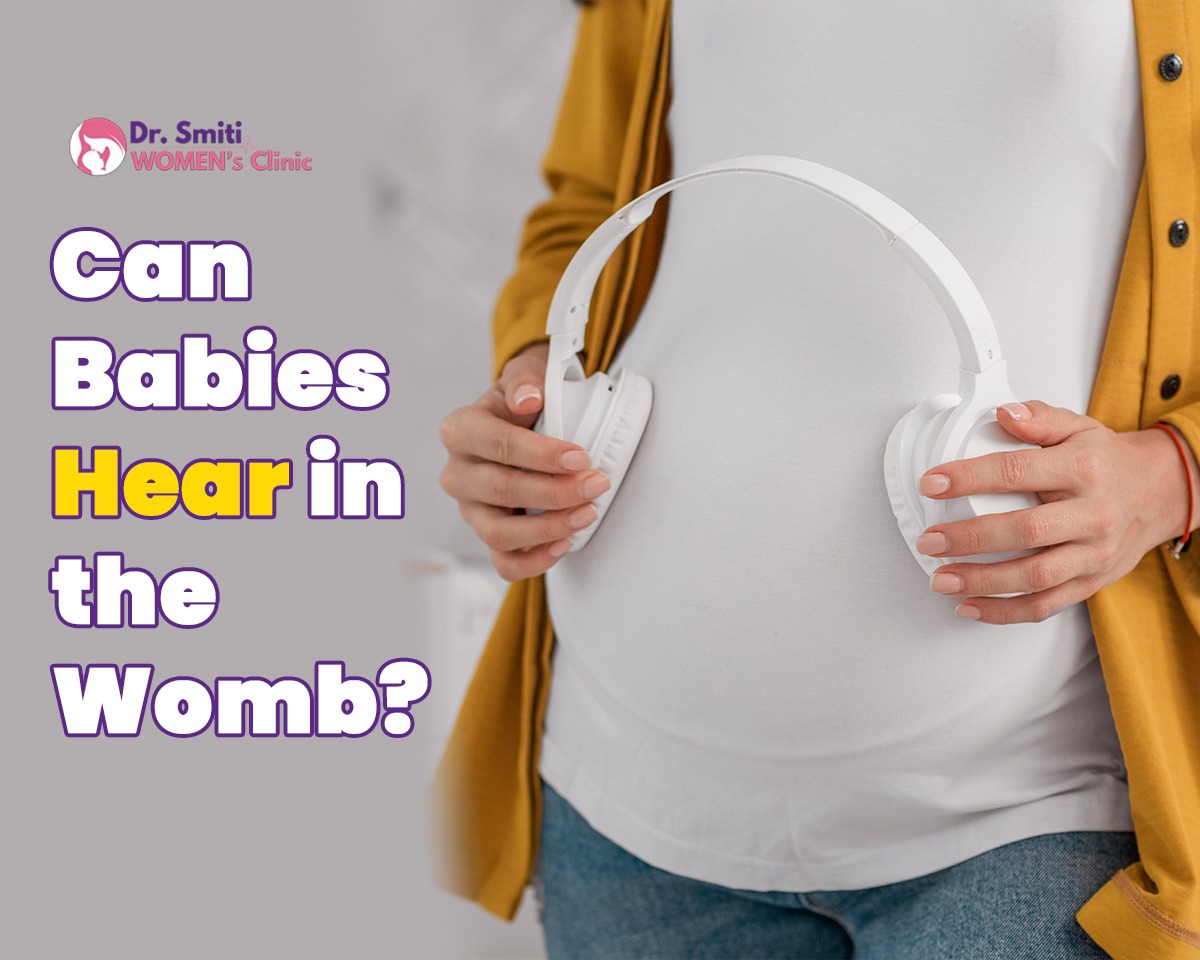Pregnancy is a wondrous voyage filled with eager anticipation and marvel. Soon-to-be parents eagerly await the arrival of their cherished little one, cherishing every moment of the precious time spent carrying their baby. One aspect of this journey that often sparks curiosity is whether babies can hear sounds while still in the womb. In this blog, we will explore the incredible world of prenatal hearing and the wonders it holds.
1.Prenatal Development of the Ear
Early Formation: The development of a baby’s ears begins early in pregnancy. By the end of the first trimester, the basic structure of the ears is in place. This encompasses the external ear, middle ear, and inner ear. The Role of Amniotic Fluid: The inner ear, responsible for hearing, is filled with fluid. This fluid helps transmit sound vibrations to the tiny hair cells in the ear, which then convert these vibrations into electrical signals that the brain can interpret. In the womb, this fluid-filled environment is essential for the development of the baby’s hearing system.
2.When Can Babies Start Hearing?
Early Sensitivity: While the ears start developing in the first trimester, it’s believed that the baby’s sense of hearing begins to function around the end of the second trimester, which is roughly around the 18th to 20th week of pregnancy.
The Mother’s Voice: One of the first sounds a baby is likely to hear in the womb is the comforting and familiar voice of the mother. Studies indicate that infants can identify and react to their mother’s voice even prior to birth
3.What Can Babies Hear in the Womb?
Internal Sounds: Inside the womb, the baby is surrounded by various internal sounds, such as the mother’s heartbeat and the gurgling of the digestive system. These sounds provide a consistent auditory backdrop for the developing baby.
External Sounds: External sounds, including voices, music, and ambient noise, can also reach the baby in the womb. While these sounds are somewhat muffled by the amniotic fluid, they are still perceptible.
4.The Power of Bonding Through Sound
Connecting Through Conversation: Many parents find joy in talking to their baby while in the womb. Engaging in these conversations can foster a connection between parents and their unborn child. It’s a special way for expectant parents to express their love and anticipation.
Musical Encounters: Playing music for the baby in the womb is another way to foster a connection. Some parents choose lullabies or soothing melodies, while others opt for more energetic tunes. The baby can feel the vibrations and may respond with movements.
5.Can Sounds Impact Prenatal Development?
Stimulating the Senses: While the womb provides a sensory-rich environment, introducing various sounds can stimulate the baby’s senses and encourage early development.
Emotional Impact: Some studies suggest that exposure to soothing music or the mother’s voice may have a calming effect on the baby. It’s believed that babies can sense and respond to the emotional tone of voices.
6.The Continuation of Hearing After Birth
Transitioning to the World: After birth, the baby’s auditory system continues to develop and adapt to the outside world. Newborns are particularly sensitive to the sound of their mother’s voice, which provides comfort and reassurance.
Conclusion
The ability of babies to hear in the womb is a marvel of prenatal development. While the sounds they perceive may be muffled, they create a connection between parents and their unborn child. Conversations, music, and other sounds can help establish bonds and stimulate early development. As expectant parents, cherishing these moments of connection through sound is a beautiful way to embrace the wonder of pregnancy and anticipate the joy of meeting your baby for the first time.







